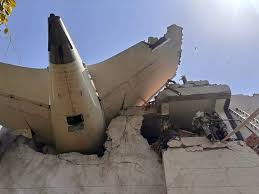A veteran American pilot, Captain Steve Scheibner, has suggested that a possible cockpit error by the co-pilot may have caused the tragic crash of Air India Flight AI171, which killed over 270 people. The flight, a Boeing 787 Dreamliner, crashed into a residential area shortly after taking off from Sardar Vallabhbhai Patel International Airport in Ahmedabad, India, on June 12, 2025.
Capt. Scheibner, a retired American Airlines pilot with years of experience flying commercial aircraft, shared his analysis on his YouTube channel. He said the co-pilot might have mistakenly raised the aircraft’s flaps instead of the landing gear just moments after take-off—a potentially fatal mistake that could lead to a sudden loss of lift.
“I think the pilot flying said to the co-pilot, ‘Gear up,’ at the appropriate time. I think the co-pilot grabbed the flap handle and raised the flaps instead of the gear,” Capt. Scheibner said. “If that happened, this explains a lot of why this aeroplane stopped flying.”
He stressed that this is a preliminary theory, but one that fits the available information about the crash timeline and aircraft behaviour. The aircraft reportedly lost altitude within seconds and crashed less than a minute after take-off, with no distress signal from the cockpit.
The crash investigation is still ongoing, with Indian authorities working alongside international experts from the United Kingdom’s Air Accidents Investigation Branch, the United States’ National Transportation Safety Board, and Boeing. The Directorate General of Civil Aviation (DGCA) of India is leading the inquiry, while an anti-terrorism unit is also participating—a standard procedure for air crashes involving high casualty counts.
Investigators have recovered both black boxes (the flight data recorder and cockpit voice recorder) from the crash site and have started analysing them to reconstruct the sequence of events inside the cockpit before the crash. The flight had no known technical issue before departure, and maintenance logs indicated the aircraft was cleared for flight.
Aviation analyst Marco Chan, a former pilot and senior lecturer at Buckinghamshire New University in the UK, told the BBC that if the flaps were indeed retracted prematurely, it could suggest a major human error. “That would point to potential human error if flaps aren’t set correctly,” Chan said. “But the resolution of the available video footage is too low to confirm that.”
Air India’s Dreamliner involved in the crash was delivered in 2014 and had passed routine inspections, according to airline officials. Boeing, the manufacturer of the aircraft, has dismissed any suggestion of a design or manufacturing flaw. “The 787 Dreamliner has undergone more than 150,000 safety tests and audits. There’s no indication of a systemic issue with this aircraft,” Boeing said in a statement.
Meanwhile, the families of the victims continue to await answers, with many calling for a transparent investigation and accountability. The Indian government has assured the public that all findings will be made public once the investigation is complete.
The crash is one of the deadliest aviation disasters in India in recent years. Air India has said it is cooperating fully with investigators and has suspended flight operations for the fleet of 787s pending further safety reviews.
Experts have said it could take several weeks before a definitive cause is determined. For now, Scheibner’s theory remains one of several being considered as investigators comb through data, crew records, and the aircraft’s maintenance history.
